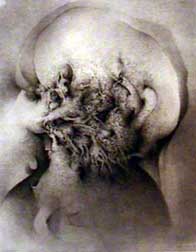

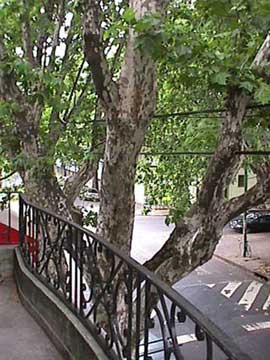


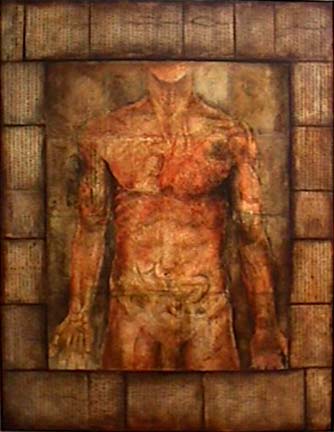
Notes on Buying Real Estate in Buenos AiresProperty prices in Buenos Aires are attractively low. If you're thinking of buying a house or apartment in Buenos Aires, do extensive research first into the buying process--which is very different from buying in the US. If you are not buying directly from the owner, make sure to do specific research into background of the realtor. Realtors function by neighborhood; they tend to be very small operations compared to the US. The buyer's part of the realtor's commission should be NO more than 3% of the transaction value. Even though prices are quoted and payments are made in dollars, to buy "en blanco" (with complete transparency), two exchange transactions are required: $$ to pesos and pesos back into $$. So the currency fees are substantial. (1-2% of the value of the transaction.) Before entering a bid on a property, it is best to engage local legal help, an escribano, for advice. Choose an escribano not associated with the realtor. The escribano is a very important player because he performs the title search and checks for liens on the property. As a rule of thumb, assume that commissions and fees will add an extra 10-15% to the purchase price. If this seems excessively complex, consider one of the myriad short-term apartment rentals available in BA. |
Art in Argentina
Argentine art exhibits neither the bold textured abstraction nor the ancient imagery typical of Mexican and Central American art. Instead, it is the art of a temperate clime rooted in the culture of European 19th and early 20th century emigrés--people for whom political ideas and psychological insights were of profound importance. Argentine art has a tendency to visual intricacy and reveals a profound engagement in human concerns.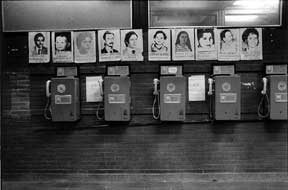
Proa
The old dockside Italian neighborhood of steel shacks, sidewalk tango and serious soccer called La Boca is the unlikely home to Fundación Proa an important new contemporary art venue . Escenas de los 80s (Scenes from the 80's), on view February 2004 at Proa included images from that turbulent and promising decade in recent Argentine history.
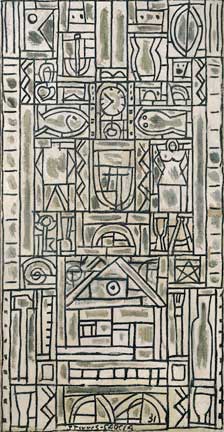
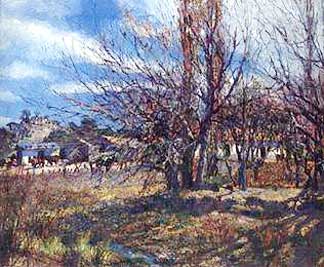

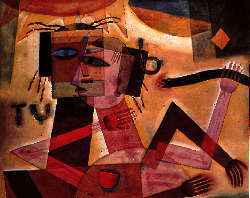
Retiro & Downtown area:
Tramezzini--good breakfast spot on Santa Fe near Avenida Julio
Malandrino--try the fish in this small, congenial lunch restaurant on Calle Marcelo de Alvear 868 near Suipacha. Shops selling well-priced furs, primarily fox and otter, are nearby along this street.
Cabana Las Lilas--fine steakhouse in Puerto Madero, Avenida Moreay de Justo 516
El Tocororo--for a break from the syncopated wheezing of the tango Bandoneon, try this Cuban restaurant with jazz & salsa music in the Puerto Madero.
Casa Lopez--if you have time, or patience, for only one shop, spring for top-of-the-line leather goods here on Calle Marcelo de Alvear near Florida.
Palermo Chico:
Museo Renault--in a city in love with cars, it's hardly a surprise to find a chic restaurant in an former automobile showroom. This spot is on Figueroa Alacorta next door to the MALBA.
Gropius Bar--congenial bar/cafe/gallery, Cabello 3352
Palermo Viejo:
This is a buzzing barrio of restaurants, bars and shops with zones nicknamed "Hollywood" and "Soho". Ask any local shopkeeper for one of the excellent maps for shopping and dining in the area.
Bobo--chic, boutique hotel in Palermo Soho.
Infraganti--pizza and pasta in a lively, beautiful Palermo Hollywood space, Calle Bonpland 1808
Cabernet Restaurant--fine foods & wines in Palermo Soho, Calle Borges 1757
Pastis--French bistro cuisine in Palermo Soho on Gorriti at Thames
Plazacita Serrano aka Plaza Cortazar--this square is surrounded by many cafes and restaurants for a young audience and forms the heart of the Soho section of Palermo Viejo.
Palermo Viejo New Designer Shops:
Colombas--women's designer handmade sweaters in Palermo (Soho), Calle Borges 1757
Constanza y Eloisa--women's clothing in Palermo (Soho), Armenia 1959
Trosman--women's clothing in Palermo (Soho), Armenia 1998
Las Cañitas:
This buzzing neighborhood near the Polo Field has many indoor/outdoor restaurants lining the three blocks of Callecita Baéz. Take a table, then dine, drink and enjoy the street scene well into the early morning hours.
Villa Crispo:
Calle Murillo--taxi out to this street of leather outlet shops selling jackets, belts and great-looking carry-on bags. Just off Murillo on Calle Acevedo 119, Carteras Brescia offers innovatively designed hand-painted leather bags as well as more classic items.
